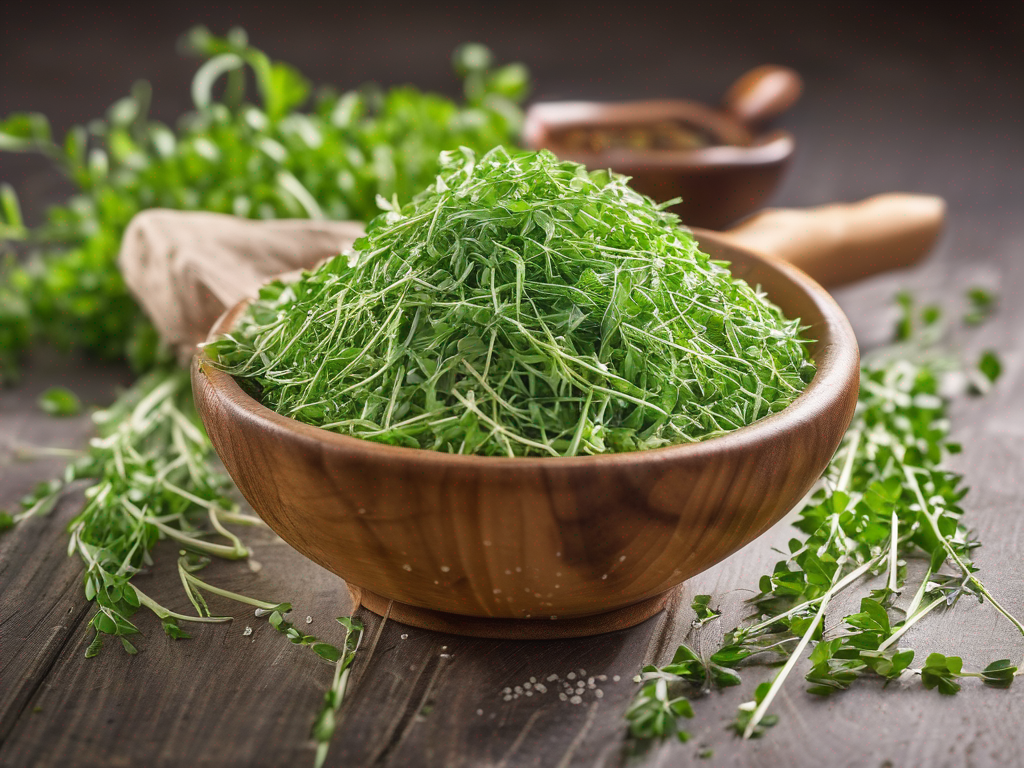
How to Store Alfalfa to Keep it Fresh Longer
Get Your Free Food Safety Cheat Sheet
30 most common foods with instant answers. Print it and stick it on your fridge—completely free!
How to Store Alfalfa to Keep it Fresh Longer
Alfalfa, a nutrient-rich legume known for its delicate flavor and crisp texture, is a popular choice for salads, sandwiches, and wraps. To fully enjoy the freshness and nutritional benefits of alfalfa, proper storage is key. Improper storage can lead to wilting, browning, and spoilage, reducing both the taste and nutritional value of this vibrant green. In this blog post, we will explore the best practices for storing alfalfa to keep it fresh longer. (Alfalfa)
Understanding Alfalfa Storage
Before delving into storage tips, it's essential to understand the nature of alfalfa and how it reacts to different storage conditions. Alfalfa is a delicate green that is sensitive to moisture and ethylene gas, a natural plant hormone that accelerates ripening and decay in certain fruits and vegetables. To maintain the freshness and crispness of alfalfa, it's crucial to create the ideal storage environment.
Factors Affecting Alfalfa Freshness
Several factors can impact the freshness and shelf life of alfalfa:
- Moisture: Excess moisture can cause alfalfa to wilt and become slimy.
- Temperature: Alfalfa is sensitive to temperature fluctuations and should be stored at the right temperature.
- Ethylene Gas: Alfalfa is sensitive to ethylene gas, so it should be kept away from ethylene-producing fruits and vegetables.
Best Practices for Storing Alfalfa
Now that we understand the factors affecting alfalfa freshness, let's explore the best practices for storing alfalfa to keep it fresh longer.
1. Purchase Fresh Alfalfa
Start with fresh, vibrant alfalfa. Look for crisp, green leaves without any signs of wilting or browning. Avoid alfalfa with slimy or discolored patches, as these are signs of decay.
2. Rinse and Dry Thoroughly
Before storing alfalfa, rinse it under cold water to remove any dirt or debris. Gently pat the leaves dry with a clean kitchen towel or use a salad spinner to remove excess moisture. Wet alfalfa can quickly spoil, so ensuring it is thoroughly dry is essential.
3. Store in a Perforated Plastic Bag
Place the dried alfalfa in a perforated plastic bag or a container with ventilation holes. The perforations allow for air circulation, preventing moisture buildup and extending the shelf life of the alfalfa.
4. Place in the Refrigerator
Store the bag of alfalfa in the crisper drawer of the refrigerator. The cool temperature helps slow down the wilting process and keeps the alfalfa fresh for longer. Avoid storing alfalfa near ethylene-producing fruits like apples, bananas, and tomatoes, as this can cause premature wilting.
5. Check and Use Promptly
Regularly check the alfalfa for any signs of wilting, browning, or sliminess. Use the alfalfa promptly to enjoy it at its freshest. If you notice any deterioration, discard the affected leaves to prevent spoilage from spreading.
Conclusion
By following these simple storage tips, you can extend the freshness and shelf life of your alfalfa, ensuring that it remains crisp, vibrant, and flavorful. Proper storage not only enhances the taste and texture of alfalfa but also preserves its valuable nutrients. Remember to purchase fresh alfalfa, rinse and dry it thoroughly, store it in a perforated bag in the refrigerator, and check regularly for freshness. With these guidelines, you can enjoy the goodness of alfalfa in your meals for longer periods. Learn more about alfalfa and experiment with different storage methods to find what works best for you. (Alfalfa)
Related Posts
Here are some other articles you might find helpful:
Authoritative Food Safety References
These agencies and university labs inform every tip and health precaution we publish.
USDA FoodKeeper – Cold Storage Guidelines
Official refrigerator, freezer, and pantry timelines maintained by the U.S. Department of Agriculture.
Visit USDA FoodKeeperFDA Produce Safety Rule & Grower Guidance
Field-to-fridge handling practices that prevent contamination of fruits, vegetables, and leafy greens.
Visit FDA Produce SafetyCDC Foodborne Illness Prevention Hub
Surveillance-backed guidance on pathogens, symptoms, and steps to reduce foodborne illness risk.
Visit CDC Food SafetyUC Davis Postharvest Technology Center
University research detailing optimal storage atmospheres for produce after harvest.
Visit UC Davis PostharvestPenn State Extension – Home Food Preservation & Safety
Peer-reviewed extension bulletins on safe canning, chilling, and reheating practices.
Visit Penn State ExtensionGet Your Free Food Safety Cheat Sheet
30 most common foods with instant answers. Print it and stick it on your fridge—completely free! Want more? Upgrade to the complete guide with 70+ foods.
Scan your food directly and get instant safety info using our AI-powered camera feature.